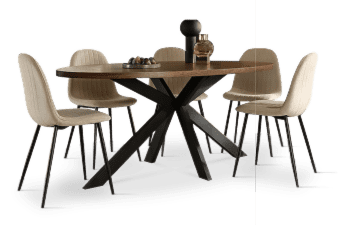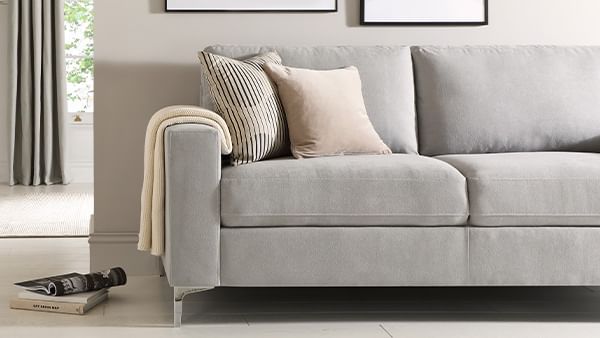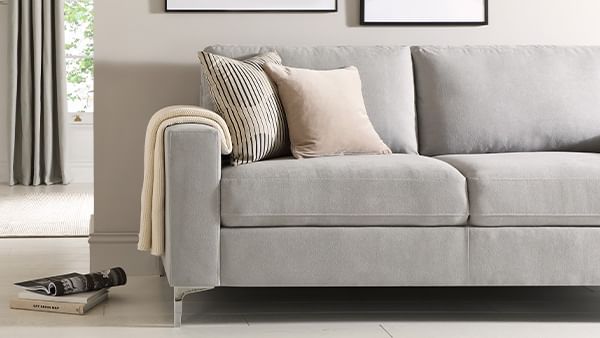Packing tips
Our guide on packing will help ease the process of transitioning to the next chapter in life.
You’ve set your moving date – now all you have to do is transport everything you own to your new home.
Sounds simple, doesn’t it? But we all know how much hard work packing can be. Starting early and being organised can make all the difference to your moving day, so take the stress out of your move with our top 10 packing tips.
Declutter
One way or another, everything must go. If you’ve lived in your home for a long time or have a tendency to hoard things, now is the perfect time for a clear out.
Transporting fewer worldly goods from your present home to your future home will make everything easier, from packing and unpacking to loading up the van. It could even save you money, as you may be able to book a smaller van or reduce the number of trips. Be strict – if something has languished in your loft for years, will you ever use it again?
Decluttering a home can be therapeutic but it can also feel overwhelming, so don’t try to tackle everything at once. Work through a room at a time or by theme: clothes, kitchen goods, books etc.
Keep, Sell or Throw?
Everything you own can be allocated to one of four columns on your checklist:
Give away - Items in a reasonable condition can be taken to your local charity shop; bag up old clothes and label as rags, as these can be recycled.
Keep – Don’t feel obliged to get rid of items with sentimental value or that you genuinely use. If you are buying a new sofa suite, your teenager might like the old sofa for their bedroom.
Recycle/Throw – Rather than binning unwanted items, take them to the local tip as there will be recycling points and safe disposal for electronic items.
Sell – Items you no longer need or wear can bring in some valuable extra income. Online sales sites such as eBay are the obvious first port of call or consider streamlining your music collection by burning CDs on to your computer and selling the remainder through CEX or Music Magpie, which also takes unwanted DVDs, games, electronics and clothes.
Make a Checklist
A well-thought-out list will help you plan your move and ensure that you don’t forget essentials. Ticking off items on your list as you complete them will give you a sense of achievement and ease any last-minute panics.
Involve the rest of the family: get the kids to write their own lists, including clear-out sessions and packing, and set deadlines with incentives. Give younger children small tasks to do; it will help them feel more engaged with the moving process and you can offer gold stars or treats for completed tasks.
Packing Boxes
Packing is much easier if you are well stocked up on packing material. The essential items are:
- Boxes and/or crates
- Packing tape
- Marker pens in different colours
- Large sticky labels
- Tissue paper and bubble wrap
Ask your local shop to save you some sturdy boxes and invest in a few different sized plastic crates as these can be reused as storage in your new home. If you look around your home, you will already have quite a lot of options for transporting your goods: clothes can go in suitcases and trunks, and kitchen items can be packed into Tupperware boxes.
Stay Organised
Mixing items for different rooms in the same box will make unpacking much harder. Box up items that go together, put heavy items in smaller boxes and make sure there are some boxes with lighter loads so everyone can help carry.
Stick two large white labels on every box, one on the side and one on the lid. Choose a colour code for each room and write the room on both of the labels, so that one will be on view even when boxes are stacked up. Don’t forget to label boxes with fragile contents.
Alternatively, use coloured labels and allocate a colour to each room: blue for the living room, green for the kitchen etc. It will save a lot of time on your moving day and when you come to unpack.
Packing Fragile Items
One common concern when moving home is that things can and do get broken. Make sure you use plenty of bubble wrap or tissue paper for glassware, ornaments, pictures and other breakables, and use cardboard in between layers of glassware. Towels and bed linen can also be used to cushion breakable items.
For particularly valuable items or those with great sentimental value, wrap them carefully and transport them on the back seat of your car or carefully packed in the boot. Check that your household insurance covers your belongings in transit or that your removal firm has the correct insurance in place.
Should it stay, or should it go?
At some point you’ll need to make a decision about fixtures and fittings, from curtains and blinds to lampshades and white goods.
If you’re in rented accommodation, this should be a lot easier as everything that belongs to the property owner will be listed on your inventory. If you are using a removal firm, make sure you label everything clearly as you don’t want to arrive at your new property to find your landlord’s coffee table on the back of the truck.
If you are selling your home, your solicitor will usually send a form on which you can tick which items are staying, which items are going and which you’d like to offer for sale to the buyer, for example, fridges, sofas or dining table and chairs.
Moving Plants
Transporting house plants can be tricky, so water your plants a couple of days before the move and prune larger plants to make them easier to handle.
As there’s a risk of pots tumbling over or stems being snapped off in transit, bubble wrap and packing peanuts – those little bits of foam shaped like a peanut – will help secure your plants.
Use a tall box so the whole plant is protected and make sure it’s clear which way up the plant should go. Add air holes if you’re travelling a long distance.
Essentials Box
The Essentials Box is a key item for any house move. This is the box that contains all the essential things you’ll need on arrival at your new home and it should be transported in the car with you so that it doesn’t go astray.
Items for the Essentials Box:
- Kettle, tea/coffee, mugs, sugar
- Cool bag with milk and cold drinks
- Biscuits and other snacks
- A couple of screwdrivers, scissors, tape
- Surface cleaner and hand soap
- Hand towel and tea towel
- Toilet roll and kitchen roll
- Radio/iPad with dock for music/entertainment when you arrive
- Paper plates and plastic cutlery for a takeaway on your first night
If you’re travelling a long way to your new home, pack up a mini rucksack for each child with games, favourite toys and treats.
Reliable Removals
Moving can be a daunting prospect, so don’t be afraid to ask for help if you need it. If carrying boxes is difficult for you, use a professional removal firm, it will be worth the expense. You can even pay extra for companies to do your packing. Friends and family may also be willing to help out – you can offer to do the same for them next time they move, treat them to a meal out once you’ve settled in your new home or send them some gift vouchers afterwards.





